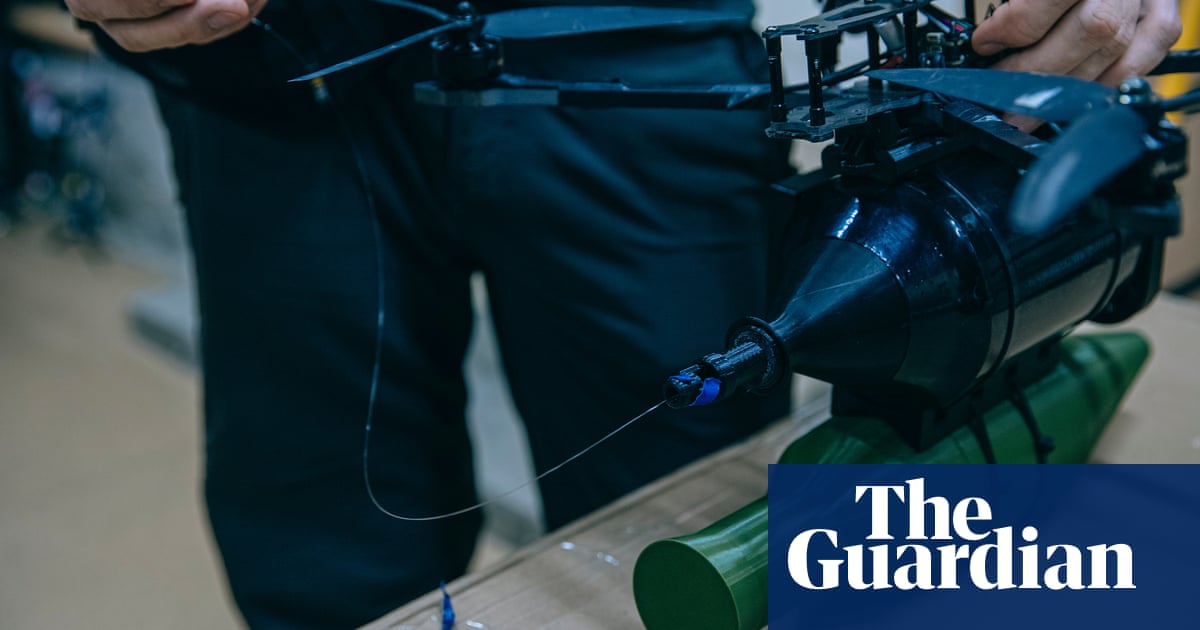At a secret workshop in Ukraine’s north-east, where about 20 people assemble hundreds of FPV (first person view) drones, there is a new design. Under the frame of the familiar quadcopter is a cylinder, the size of a forearm. Coiled up inside is fibre optic cable, 10km (6 miles) or even 20km long, to create a wired kamikaze drone.
Capt Yuriy Fedorenko, the commander of a specialist drone unit, the Achilles regiment, says fibre optic drones were an experimental response to battlefield jamming and rapidly took off late last year. With no radio connection, they cannot be jammed, are difficult to detect and able to fly in ways conventional FPV drones cannot.
“If pilots are experienced, they can fly these drones very low and between the trees in a forest or tree line. If you are flying with a regular drone, the trees block the signal unless you have a re-transmitter close,” he observes. Where tree lined supply roads were thought safer, fibre optic drones have been able to get through.



Ok so I have an 85mm micro whoop. Or had i probably should toss the batteries. Those batteries last 3 minutes tops, so you’d be limited to maybe a round trip of 3km, 5km if you let it die where you send it.
That’s not carrying anything, that’s just remote surveillance. I get how that can be insanely useful on the battlefield, but if you attach a 20km fiber optic cable (without adding in friction of the cable and air resistance) on an 85mm it’s going a fat lot of nowhere. It’s about 125g per meter of fiber optic.
Unless the drones you’re talking are tiny ultralight plane things with some incredible battery, I don’t see any tiny drone with that kind of range.
Unless! Unless, and I don’t find it very likely, but there’s some other power delivery going on I don’t know about.